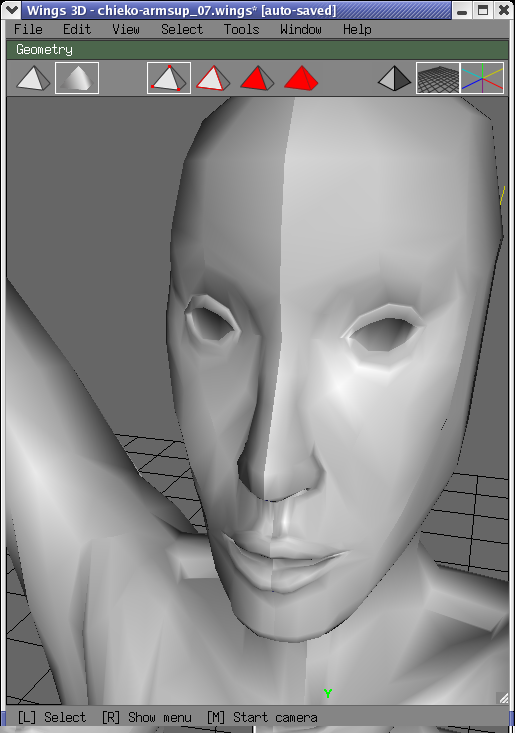|
|
Wings 3d Tutorial 2 Hopefully a lot of messing around has made you familar with the Wings interface, so you can try and model something for real. Teapots and other simple inanimate objects are pretty boring. I prefer human forms and faces. It's probably nice to have a good anatomy for artists reference book, actual art instruction background, or anything else specifically tailored for art. Drawing experience helps, but the nice thing about 3D is that simple shadowing is automatic- sculpture experience probably applies more directly. 
What you need is a good source of images of people- but I've gotten along without buying anything tailored to art. There's much in the way of cheap and free images on the internet and elsewhere: The non-computer images are better if screen real-estate is an issue. If you want to do a lot of muscle detail, look for extremely fit athletes or bodybuilder images where a lot of muscles and tendons are flexed and sticking out- and find some good anatomical illustrations (google image search again) that show underlying muscles alone, and try to match these with the muscles visible through skin (learn the muscle names if you want to communicate with anyone or the search engines about them). You don't want to jump into complicated folded cloth modeling from the beginning- basic human form comes first. Finding useful (though possibly in poorer taste) images for that is left as an exercise for the reader (hint: use the internet). Reference images (where images are on surfaces inside Wings) are nice, though last time I checked it required another program and was a pain. Style Model purely to try and capture a certain form, but don't be too ambitious at first (e.g. make a basic arm, but don't do the fingers on the first try, and don't model fine muscle/tendon detail). If you start with mostly quads, eventually you'll run into circumstances where triangles or n-sided polygons are needed to connect everything, and you'll realize that polygon edges should run along visible peaks/ridges/creases in the source object. Making everything mesh together can be problematic- if you don't like your results, try to find how other people solved the problem- there's a pretty standard approach to modelling heads, for instance. Look in the wings forum for images that show the original pre-smoothed 'cage' of a model, and also look at models built in other modeling programs. You'll start to see a general style for any object (though organic and sharper angled objects have quite different styles usually) after a while. Don't get attached to specific models- start something, work on it awhile, and if you get tired of it or run into problems, start over and try a variation on the same or something completely difference (or just take a break for any number of hours or days), with an eye towards avoiding those problems from early on. Just because you can reload earlier stages doesn't mean you should, just start over and don't invest too much into one model. Think of it as making a lot sketches before going all out with expensive paints and quality canvas. Copyright © 2002-2003 Lucas W |